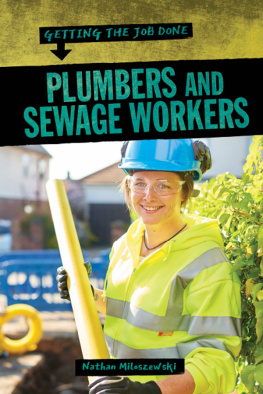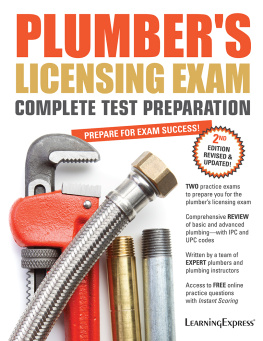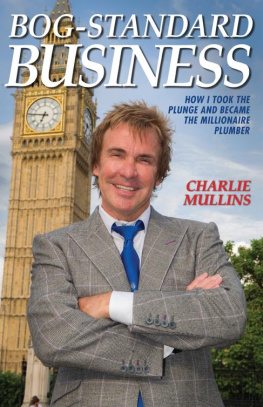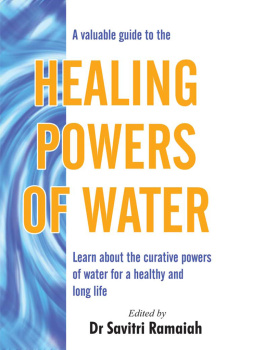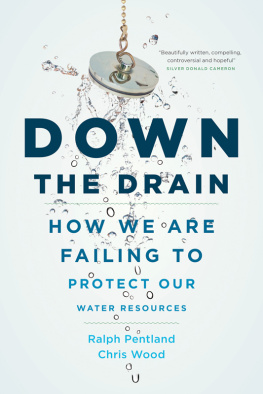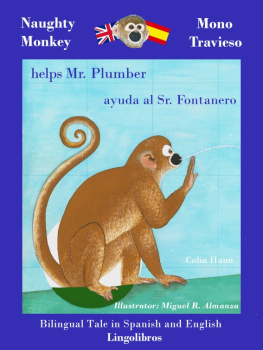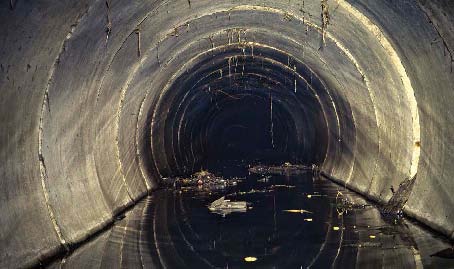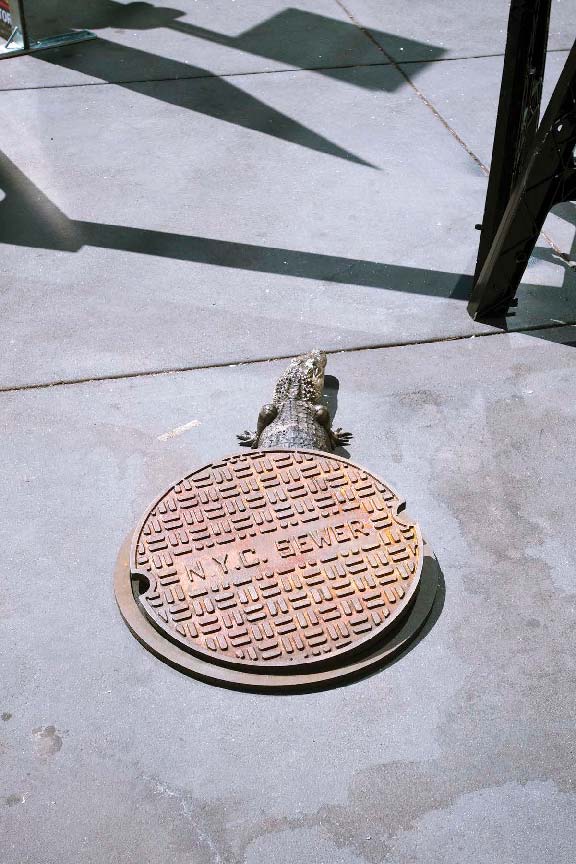Published in 2020 by The Rosen Publishing Group, Inc. 29 East 21st Street, New York, NY 10010
Copyright 2020 by The Rosen Publishing Group, Inc.
All rights reserved. No part of this book may be reproduced in any form without permission in writing from the publisher, except by a reviewer.
First Edition
Editor: Greg Roza
Book Design: Reann Nye
Photo Credits: Cover sturti/Getty Images; pp. 5, 7 Andrey_Popov/Shutterstock.com; pp. 8, 9, 16 Vladimir Mulder/Shutterstock.com; p. 10 micmacpics/Shutterstock. com; p. 11 Bertl123/Shutterstock.com; p. 13 Richard Levine/Corbis News/Getty Images; p. 15 sturti/E+/Getty Images; p. 17 Ethan Miller/Getty Images News/ Getty Images; p. 18 BartCo/E+/Getty Images; pp. 19, 21 Monkey Business Images/Shutterstock.com; p. 22 Dragon Images/Shutterstock.com.
Cataloging-in-Publication Data
Names: Miloszewski, Nathan.
Title: Plumbers and sewage workers / Nathan Miloszewski.
Description: New York : PowerKids Press, 2020. | Series: Getting the job done | Includes glossary and index.
Identifiers: ISBN 9781725300125 (pbk.) | ISBN 9781725300149 (library bound) | ISBN 9781725300132 (6pack)
Subjects: LCSH: Plumbing--Juvenile literature. | Plumbers--Juvenile literature. |
Sewerage--Juvenile literature. | Sewage disposal--Juvenile literature. | Sewage-Purification--Juvenile literature.
Classification: LCC TH6124.M526 2020 | DDC 696.1023--dc23
Manufactured in the United States of America
CPSIA Compliance Information: Batch #CSPK19. For Further Information contact Rosen Publishing, New York, New York at 1-800-237-9932.
A WORLD OF PIPES
Pipes are everywhere! They run through our cities, buildings, and houses. Thats a lot of pipes for plumbers and sewage workers to install, or put in place. We need pipes to carry water into and out of our houses so we can cook food and wash our dishes, brush our teeth and take showers, and wash our clothing.
You might not think about your pipes until theres a problem with them. Your tub drain might be clogged or maybe theres sewage backing up into your toilet. To fix problems with your pipes, a plumber or sewage worker will come to the rescue!
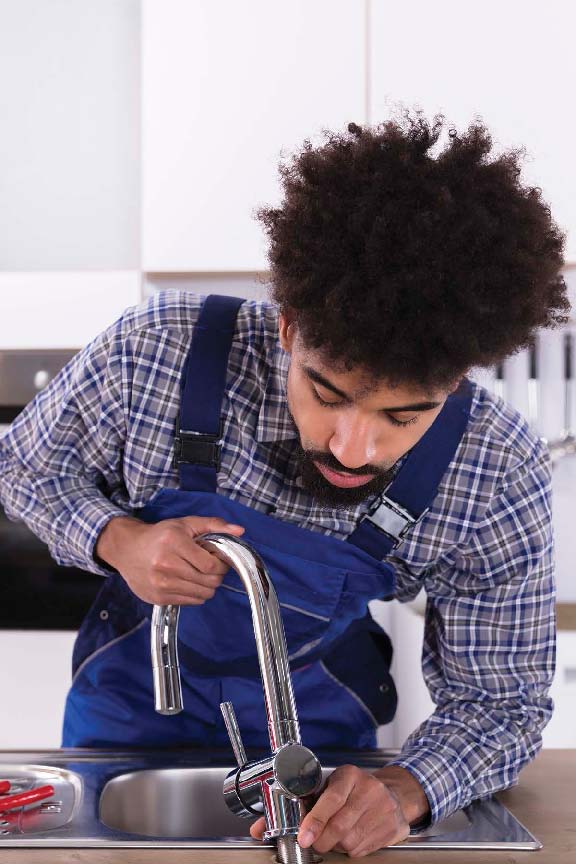
Your parents may be able to fix small problems with your pipes. However, larger problems mean theyll need to call a plumber.
BEING APLUMBER
To be a plumber, you have to use your hands and your brain. Plumbers put in water pipes and natural gas lines. A plumbers job requires good math skills. They need to take measurements, do math problems involving fractions, and connect different sized pipes and fixtures. Plumbers use many different tools. Plumbing tools include pipe wrenches, copper or plastic piping, a welding torch, special glues, clamps, and testing equipment.
Plumbers cant just walk into a bathroom and tell you why your sink is clogged. They need to investigate first! Plumbers squeeze under the sink, into crawl spaces, and even underground to do their job.
Fascinating Career Facts
Plumbers also need to know how to read blueprints and understand local building codes.
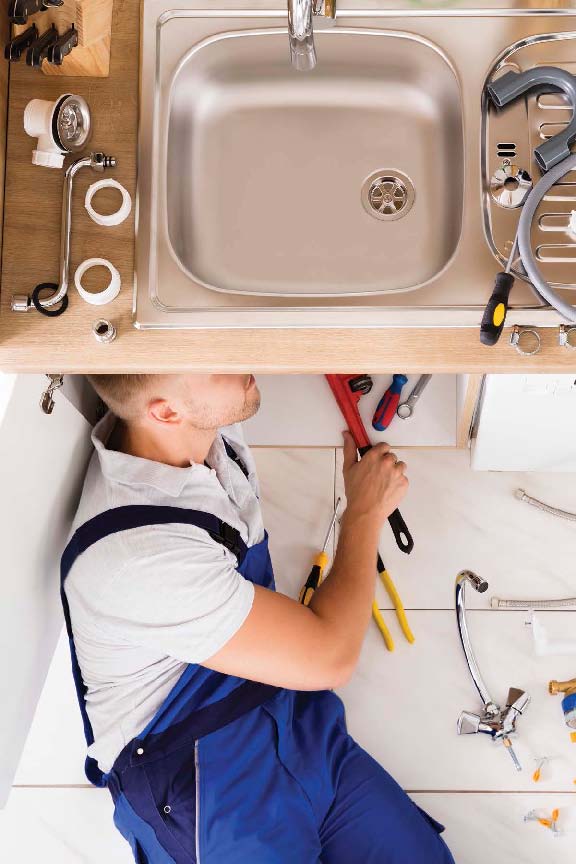
Working in small spaces in all kinds of weather is a part of the job. Plumbers often work upside down, on their backs, and in small spaces.
A SMELLY AND DANGEROUS JOB
Sewage workers deal with the pipes that carry water out of houses and buildings. This water often carries human waste, which can make it dangerous. There are many miles of sewer pipes below the street and under your home. This is where sewage workers do their work. They keep our water clean and stop wastewater from backing up into roads or homes.
div class="box">
Fascinating Career Facts
A sewer is a very smelly place to work. Human waste, baby wipes, garbage, rotting food, and leaves are just a few things sewage workers find in our sewers.

One part of a sewage workers job is to inspect sewers. Some sewers in older cities are hundreds of years old!
Sewage workers walk, wade, swim, and dive into streams of waste to remove sewage backups and repair any damaged sections of the sewer line. You may never see sewage workers. They open up manhole covers on the street and disappear into the dark tunnels below.
A BRIEFHISTORY
More than 2,000 years ago, the ancient Romans were the best plumbers in the world. They built aqueducts of stone to carry fresh water down from the mountains into the cities below.
Fascinating Career Facts
Plumbum means lead in Latin. This is where the word plumbing comes from. Lead was the metal used to make pipes many years ago. Lead is known to make people sick, so we no longer use lead pipes.
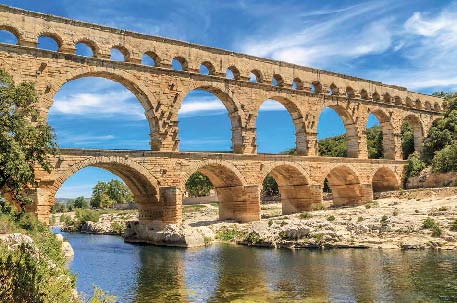
The Pont du Gard is a famous Roman aqueduct that crosses the Gardon River in southern France. It was built in the first century AD to supply the city of Nmes with fresh water. In 1985, it was named a UNESCO World Heritage Site.
In the past 200 years, there have been many innovations in plumbing and sewage. These innovations help us stay clean and healthy and they are affordable for many people. However, in some parts of the world, people cant easily get fresh, clean water and dont have sewers to carry away wastewater. Without fresh, clean water, many people in these parts of the world get sick. Some people even die because of contaminated, or dirty and impure, water.
MAJOR MYTHS
One popular myth is that Sir Thomas Crapper invented the modern flushing toilet. Sir Thomas Crapper was a plumber who had some patents in the late 1800s. However, Sir John Harington actually invented the first flushing toilet in 1596.
Some people believe the myth that alligators live in sewers. However, sewers arent good homes for alligators and they dont like living there. Alligators have gotten stuck in storm drains and large outdoor pipes while exploring. Dont be afraid, though, because they cant get into your house pipes. Those are too small for a big alligator to fit inside!
Fascinating Career Facts
Sir John Harington was a member of the royal court of Elizabeth I, a translator, author, and a wit, or person talented at making clever and amusing comments. Queen Elizabeth I was his godmother.

